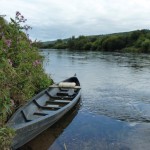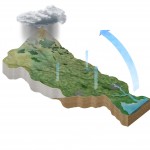Do we have the balance right between living and working…
What is catchment science?
Catchment Science is the study of the connections and relationships between the physical landscape, ecosystems, and human activities within a water catchment.
Living in a catchment that has healthy water can help a community have a better quality of life – the water can make sure local people have high quality drinking water, support livelihoods like food production, facilitate recreational angling or water sports, and support local ecosystems, so plants, animals, fish and insects that depend on having healthy water can thrive and flourish.
To protect and improve our rivers, lakes and coastal waters, we need to understand how they flow through and are connected with the diverse landscapes that surround them, and what is causing pressures on their ability to support the communities, livelihoods and ecosystems that depend on them for clean and healthy water. This emerging field is called catchment science.
Catchment science is the study of the dynamic interactions between the physical catchment landscape, the ecosystems that sit within that landscape, and the human activities that can cause impacts to ecosystems in that landscape. These three elements are all linked within the source pathway receptor framework (Figure 1).

The fourth element in the catchment science and management nexus is the identification of efficient and effective mitigation measures based on this catchment science understanding. Understanding all the elements within the framework equally, and more importantly the linkages between them, is essential for carrying out the pressure-impact analyses which is central for identifying ‘the right measure in the right place’.
The importance of the physical setting in understanding problems and identifying appropriate measures was not well developed in the last Water Framework Directive cycle, and in our experience, it is still missing right across the water sector. There is still an assumption that pressure equals impact, or in other words that only two elements of the framework (source and receptor) are needed to arrive at solutions.
However, the physical landscape creates the pathway links between the human activities (sources) and the ecosystems (receptor). Where there is no pathway link between sources and receptors, there is no requirement for measures. This is a fundamental principle that underpins the way we need to address diffuse pressures, which are our greatest problem. The physical landscape also influences the inherent nature of the ecosystems that depend on it and therefore the types of rehabilitation or measures that may be required. There is a need therefore to strengthen our national capacity in understanding the physical setting. This is the main reason that the dominant scientific expertise within the Catchment Science and Management Unit when it was initially established in 2014 was physical science disciplines rather than biological sciences.
The ideal catchment scientist has a firm knowledge and understanding of all the source, pathway receptor elements of catchments, a good grounding in appropriate measures, and most importantly, the capacity to integrate, analyse and synthesise that knowledge to gain new understanding for the purposes of answering relevant catchment science and management questions.
Catchment science is a relatively new discipline however, and inevitably practitioners have different strengths and training across the elements. Examples of the types of disciplines applicable to each of the elements is provided in Table 1.
Table 1: examples of the types of disciplines appropriate to each of the three catchment science elements
| Human Activities Source and Measures | Physical setting (Pathway) | Ecosystem response (Receptor) |
| Engineering | Earth Science | Ecology |
| Agricultural science | Geology | Botany |
| Environmental science | Physical geography | Zoology |
| Forestry Science | Hydrogeology | Limnology |
| Geomorphology | Aquatic Science | |
| Soil Science | Biology |
| Communicating, building partnerships and encouraging understanding between different disciplines and sectors |
While practitioners can gain experience and training in elements they haven’t studied in, and this is to be encouraged, it is more difficult for them to reach the same standard as someone with a relevant postgraduate degree, i.e. a physical landscape scientist is unlikely to be able to learn enough biology to match the skills and expertise of a biologist with a PhD; and similarly, a biologist is unlikely to be able to learn enough physical landscape science to match the skills and expertise of a geologist, or a soil scientist, or a geomorphologist, or a hydrogeologist with a PhD.
This makes the ability to collaborate, integrate, drive innovation and clearly communicate between multiple disciplines that often have their own scientific jargon more important. The best catchment scientists are strong in their respective disciplines and score highly in their abilities to collaborate, integrate, innovate, and communicate their findings.
Suggesting solutions, helping build partnerships, and promoting understanding
Understanding the catchment, what are the significant pressures, and suggesting measures that will enhance the environment in these areas are only part of the catchment scientist’s role in Integrated Catchment Management – helping others understand the outcomes of the catchment scientist’s assessment is also key.
The first step in Integrated Catchment Management is building partnerships, which are vital when trying to implement measures that will often need significant buy-in from the local community. A key part of this work is developing and communicating a vision for the catchment, by asking the local community what is important to them. Catchment science can then help inform the local community and any government agencies involved in managing a catchment in deciding on what actions to take to help them achieve this vision. While they may not always be directly involved, the outcomes of characterisation by catchment scientists can be very useful in helping local communities decide what actions they should take.
To sum it all up in one simple phrase… By working together we will achieve more.







